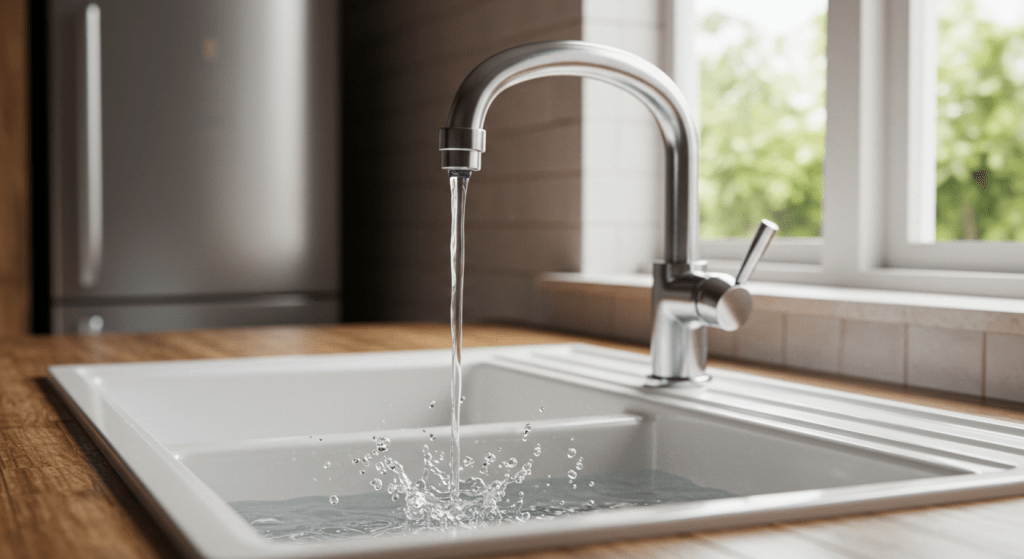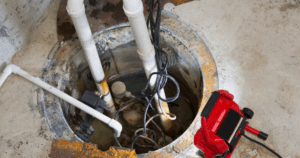Nothing’s more frustrating than turning on a faucet only to get a weak trickle of water. Low water pressure can make daily tasks like showering, washing dishes, and doing laundry inconvenient. If you’re experiencing this issue, it could be due to clogged fixtures, hidden leaks, or issues related to plumbing in Staten Island, where aging pipes are often a common culprit. Fortunately, most water pressure problems have simple fixes.
In this guide, we’ll walk you through some of the most effective ways to fix low water pressure and help restore strong, steady water flow in your home.
Clean Clogged Faucets and Showerheads
Mineral deposits and sediment can build up inside faucet aerators and showerheads, blocking the water flow. This is especially common in areas with hard water, where calcium and lime deposits accumulate over time. If you notice low water pressure in only one or two fixtures, this is likely the issue.
To fix this, unscrew the aerator or showerhead and soak it in white vinegar for at least an hour to dissolve the buildup. After soaking, scrub away any remaining debris with a small brush, then rinse and reattach it. If the fixture is too clogged or damaged, consider replacing it.
Check Your Main Water Valve
Your home’s water supply is controlled by the main shutoff valve, usually located near the water meter or where the main water line enters your home. If this valve isn’t fully open, it can restrict water flow throughout the house, leading to low pressure.
Make sure the valve is turned all the way counterclockwise (for wheel-type valves) or aligned with the pipe (for lever-type valves). If you recently had plumbing work done, the valve may have been partially closed and forgotten to be reopened.
Inspect for Hidden Leaks
A leak in your plumbing system can divert water away from your fixtures, reducing water pressure. Even small leaks can cause a noticeable drop in flow, especially if they go unnoticed for a long time. Common signs of leaks include unexplained increases in your water bill, damp spots on walls or floors, and the sound of running water when no fixtures are in use.
To check for leaks, turn off all faucets and appliances that use water, then monitor your water meter. If the meter continues to move, there may be a leak somewhere in your home. You may need a plumber to locate and fix the issue if you can’t find it yourself.
Also Read: How to Prevent Plumbing Leaks in Your Home
Test Your Pressure Regulator
The pressure regulator is a small device that controls the water pressure entering your home. If it malfunctions, it can either cause excessively high or abnormally low pressure. A sudden drop in water pressure throughout the house could be a sign that your regulator needs to be checked.
You can test the pressure using a water pressure gauge, which attaches to an outdoor faucet. A normal reading should be between 40 and 60 PSI. If the pressure is significantly lower, the regulator may need to be adjusted or replaced by a professional.
Flush Your Pipes to Remove Sediment
Over time, sediment and debris can accumulate in your plumbing system, especially in older homes. This buildup can restrict water flow, leading to lower pressure in certain areas. Pipes connected to water heaters are particularly prone to sediment buildup.
To flush your pipes, turn off the main water supply and open all faucets in your home to drain the system. Then, turn the water supply back on and let the water run for a few minutes to clear out any loosened debris. If the problem persists, you may need a plumber to perform a more thorough flush.
Upgrade Old or Narrow Pipes
Older homes often have outdated plumbing systems with narrow galvanized steel or corroded pipes. These materials can restrict water flow over time, leading to persistently low pressure even if no other issues are present.
If your home has aging pipes, replacing them with modern materials like copper or PEX piping can significantly improve water pressure. This is a larger investment but can prevent future plumbing problems while improving overall water flow.
Read More: How to Prevent Frozen Pipes During Winter
Need Help With Plumbing in Staten Island?
If you’ve tried these solutions and still struggle with low water pressure, it’s time to call in the experts. RK Plumbing & HVAC Services LLC provides professional plumbing services in Staten Island, diagnosing and fixing water pressure issues efficiently. Whether it’s clogged pipes, leaks, or outdated plumbing, our team ensures reliable solutions to restore strong water flow.
Get your plumbing back in top shape—contact us today to get started!







